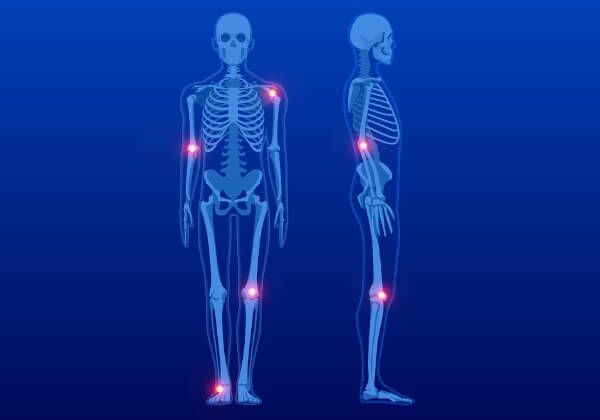The high prevalence of bone density loss and the devastation of its consequences has driven a search for solutions and prevention methods. It was along this search that bone health myths were born. By separating the facts from fiction, you can take the next steps to promote bone strength to keep you moving year-round.
Myth 1: Only Women Need to Worry About Bone Density Loss
The truth is that the risk of bone density loss increases with age for both men and women. After age 50, bone breakdown occurs at a faster rate than bone formation, and bone loss often accelerates.
Men in their 50s do not experience the same rapid bone density loss that women do in the years following menopause. However, after the age of 65, men lose bone mass at the same rate as women. The absorption of calcium also begins to decrease with age in both sexes.
Calzbone®, a patented form of Cissus quadrangularis, helps promote bone density by directing proper calcium utilization. This can help both men and women take preventative steps to support overall bone health.
Myth 2: Low Calcium Is the Cause of Poor Bone Health
Calcium is an important nutrient for bone health, but this is not the full picture. Optimal bone health relies on a variety of nutrients such as vitamin K, magnesium, phosphorus, potassium, and B vitamins, as well as vitamin D to support efficient absorption of calcium.

Calcium and its relation to bone metabolism is a complex process involving all of these nutrients as well as the parathyroid gland, kidneys, liver, and obviously bones. Therefore, incorporating a nutrient-rich diet, regular exercise, and healthy lifestyle choices into your daily routine is the best plan for optimal bone health.
Calcium Hydroxyapatite is an easily absorbable, naturally occurring, whole mineral form of calcium and is the substance of which bone cells build bone. When paired with vitamin D3, your bones get the essential nutrients they need, working together to achieve optimal peak bone mass more than calcium supplementation alone.
Myth 3: Only the Elderly Need to Worry About Bone Density Loss
Age is a major risk factor for bone density loss because, as stated earlier, bone breakdown occurs at a faster rate than bone formation as part of normal aging. Most people reach their peak bone mass around age 30, at which point the body replaces about as much bone as it loses.
Around age 40, new bone formation is greatly reduced, which causes the bones to become thinner and weaker. The more bone mass you have at your peak, the stronger your bones will be as you get older. It is easier to prevent the deterioration of bone health than building new bone.
A proactive approach to bone health will help you maintain bone strength as you age. Powerful ingredients like MenaQ7, a clinically studied form of vitamin K2, helps supply bone cells with the necessary nutrients to make the protein required for bone formation and encourage proper utilization of calcium.
Myth 4: You Shouldn’t Exercise if You Have Bone Density Issues
Exercise is an important part of any healthy lifestyle. When you exercise, your bones are stimulated to produce new tissue, which can help maintain healthy bone density levels as you age. In addition, low-impact exercises will strengthen muscles to promote balance and stability, reducing the risk of falls and broken bones.

Weight-bearing exercises are best for maintaining and building bone, and are especially beneficial when combined with regular consumption of bone-healthy nutrients. Vitamin D3 helps the body maintain calcium and phosphorus levels and directs proper mineral deposition onto the bone. At the same time, vitamin K2 encourages the body to properly utilize calcium to build healthy bone tissue.
Myth 5: There Are No Symptoms of Bone Loss
Bone loss is generally a silent condition, and many people do not realize they have problems until after a fall and fracture. However, there are some warning signs you can look out for. Early signs can include losing height, stooped posture, sudden back or bone discomfort, and brittle nails.
Awareness of the risk factors allows you to choose a healthful lifestyle that includes a balanced diet, regular exercise, and certain naturally-occurring ingredients for well-rounded bone health support. With this preventative approach, you can achieve healthy bone density and reduce the risks of more serious symptoms.
Final Thoughts
Knowledge is power, and differentiating fact from fiction gives you the power to take care of your bones. You can’t stop the aging process or its influence on bone health, but with preventative care, you can maintain optimal bone density at any age. Armed with the facts and joint-supporting nutrients, you can take on aging and bone health with confidence.
Dr. Adam Kreitenberg

Dr. Adam Kreitenberg is dual board-certified in both rheumatology and internal medicine. He completed his internal medicine internship, residency, and rheumatology fellowship at the University of Southern California and Los Angeles County Medical Center.






